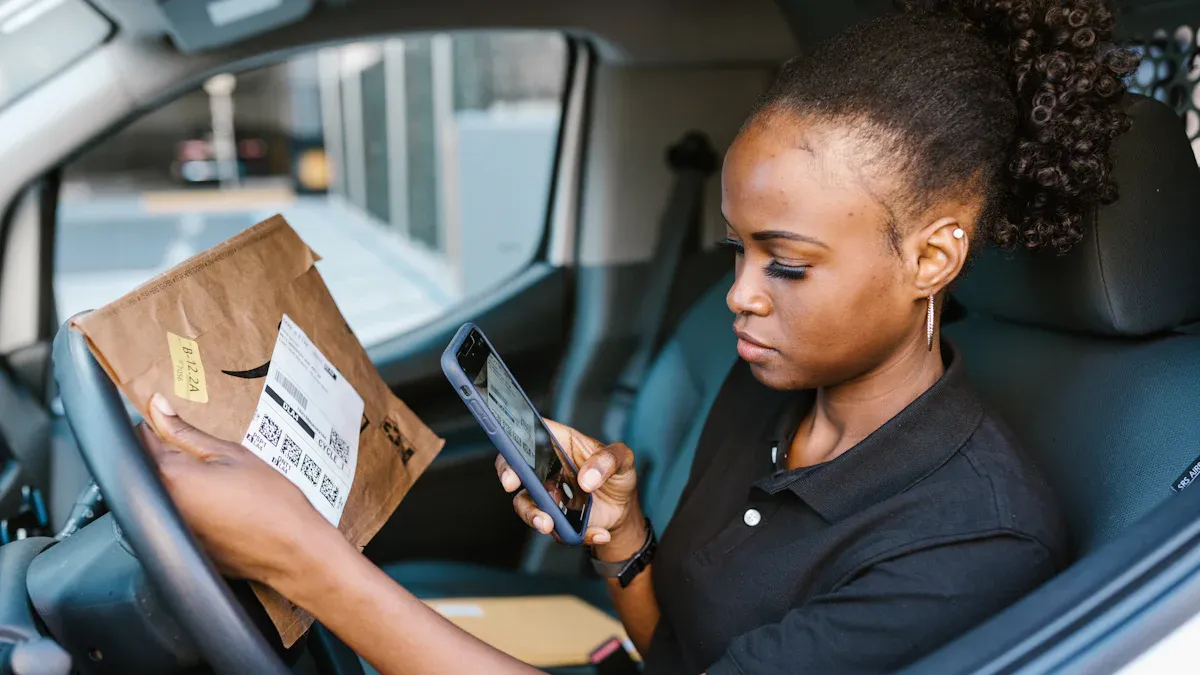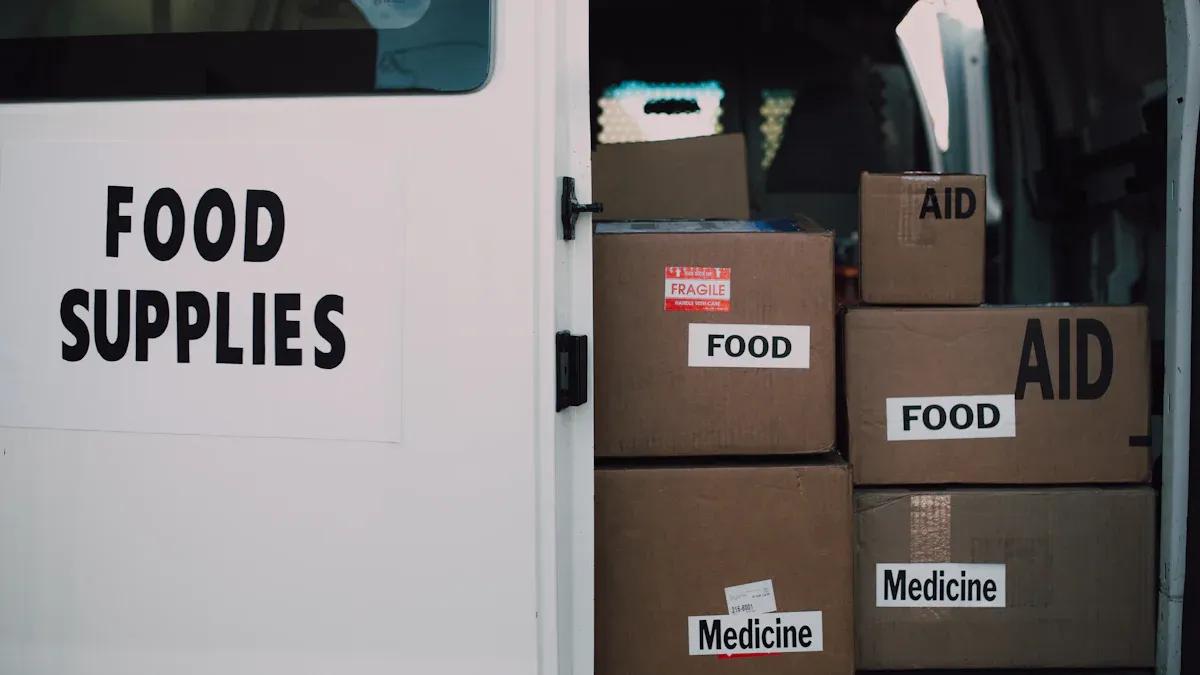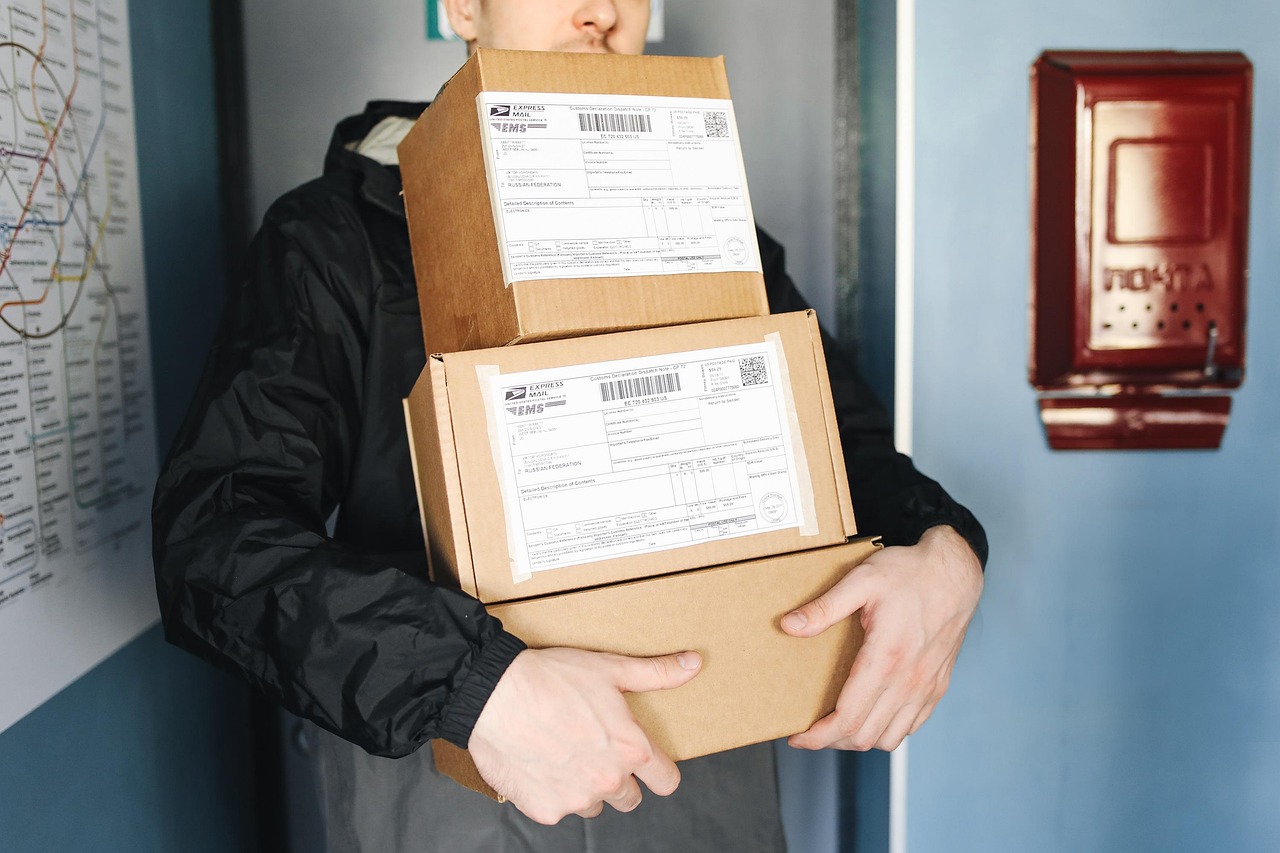Understanding Last Mile Delivery and Its Importance in 2025

Last-mile delivery represents the crucial final step of transporting a product from a distribution hub directly to your doorstep. It’s the moment where your online order transforms into a tangible package in your hands. By 2025, the importance of last-mile delivery has reached new heights. Why? Because the e-commerce industry is thriving, and your demand for speed and convenience has never been greater.
The global last-mile delivery market was valued at $132.71 billion in 2022 and is projected to grow at a CAGR of 8.8% through 2030.
Revenue in the e-commerce market is anticipated to reach $4,117 billion in 2024, with a market volume of $6,478 billion by 2029.
In the U.S. alone, the number of online shoppers is expected to increase from 268 million in 2022 to nearly 285 million by 2025.
Today, fast delivery isn’t just a perk—it’s an expectation. Same-day or next-day delivery options are becoming standard, with 88% of consumers willing to pay extra for these services. Additionally, flexible delivery options, such as selecting specific time slots or modifying delivery addresses, are revolutionizing how businesses tackle last-mile delivery to meet evolving customer needs.
What is Last-Mile Delivery?

Definition and Key Features
Last-mile delivery is the final stage of the supply chain. It’s when goods leave a local distribution center and make their way to your doorstep. This step is crucial because it directly impacts your satisfaction as a customer.
Here are some key features that make last-mile delivery unique:
It involves multiple stops, often in urban areas with heavy traffic.
It requires careful planning to optimize routes for speed and efficiency.
It’s complex because each delivery is tailored to individual customers.
This stage also faces challenges like high costs and environmental concerns. Companies are constantly innovating to make it faster, cheaper, and more sustainable.
How It Works
The last-mile delivery process might seem simple, but it involves several steps to ensure your package arrives on time. Here’s how it works:
It’s sent to a transportation hub or local warehouse.
Delivery personnel are assigned based on your address and the best route.
The package is scanned and loaded onto a delivery vehicle.
Finally, it’s delivered to your doorstep, and proof of delivery is recorded.
Each step is designed to make the process as efficient as possible. Companies use technology like route optimization and real-time tracking to improve delivery times.
Examples of Last-Mile Delivery Applications
You’ve probably experienced last-mile delivery without even realizing it. Industries like e-commerce, food delivery, and healthcare rely heavily on this process. For example:
E-commerce giants like Amazon and Shopify use it to meet your expectations for fast shipping.
Food delivery services like HelloFresh ensure your groceries arrive fresh and on time.
Healthcare providers deliver essential medications directly to patients.
Even furniture companies like IKEA and courier services like FedEx depend on last-mile delivery to keep their customers happy. As e-commerce continues to grow, this step will only become more important.
Why Last-Mile Delivery Matters in 2025
The Role of E-Commerce and On-Demand Services
E-commerce and on-demand services are reshaping how you shop and receive goods. With the rise of AI and data-driven logistics, companies can predict your needs and deliver faster than ever. Personalized delivery options, like choosing specific time slots, make the process even more convenient for you. Crowdsourced delivery models, where independent drivers handle packages, are also growing. These trends make last-mile delivery a critical part of the shopping experience.
Here’s why it matters:
Urban deliveries are expected to increase by 78% by 2030.
Subscription-based services, like meal kits or pet supplies, rely heavily on efficient last-mile delivery.
Sustainability is becoming a priority, with companies adopting eco-friendly practices to meet your expectations.
The global last-mile delivery market is booming, with an expected growth rate of 8.8% annually through 2030. This growth shows how much businesses are investing in meeting your demands for speed and convenience.
Meeting Customer Expectations
You’ve probably noticed how fast delivery has become the norm. Same-day or next-day shipping isn’t just a luxury anymore—it’s what you expect. Companies like Amazon have set the bar high, and others are racing to keep up.
What do you look for in a delivery? Speed and efficiency are at the top of the list. You also want real-time tracking so you can see exactly where your package is. Flexible options, like changing the delivery address or time, make the process even smoother. And let’s not forget about cost. Free or low-cost delivery is a big factor in your decision to shop with a particular brand.
Sustainability is another growing concern. You’re more likely to support companies that use electric vehicles or other eco-friendly methods. These expectations push businesses to innovate and improve their last-mile delivery strategies.
Business Competitiveness and Brand Loyalty
Last-mile delivery isn’t just about getting packages to your door. It’s a key factor in how you view a brand. Quick and reliable delivery builds trust and keeps you coming back. On the flip side, a late or failed delivery can leave a bad impression.
Companies that excel in last-mile delivery stand out in a crowded market. They attract more customers and keep them loyal. A smooth delivery experience can even lead to repeat purchases. Transparency also plays a big role. You want timely updates and clear communication throughout the process.
In 2025, businesses that prioritize last-mile delivery will have a competitive edge. They’ll not only meet your expectations but also exceed them, turning you into a loyal customer.
Environmental and Sustainability Impacts
Have you ever thought about how your online orders impact the environment? Last-mile delivery plays a big role in this. While it’s convenient for you, it also creates challenges for the planet. Delivery vehicles, especially in busy city centers, contribute to a 25% increase in carbon dioxide emissions. That’s a lot of pollution for just one part of the supply chain! In fact, last-mile emissions make up about 5% of total supply chain emissions.
Companies are stepping up to tackle these issues. Many are switching to electric vehicles or using bicycles for urban deliveries. These changes reduce emissions and help make cities cleaner. Some businesses are also rethinking their packaging. For example, O2, a beverage company, has replaced plastic packaging with compostable materials. They’re also working to make their cardboard 100% recycled. These efforts show how small changes can make a big difference.
"The tools and services to help brands do this are still emerging and have not been widely adopted... Consumer pressure to uphold greener policies will only continue to grow." – Austin Whitman, CEO of Climate Neutral
As a customer, you have the power to influence these changes. When you choose companies that prioritize sustainability, you encourage others to follow suit. Imagine a future where every delivery is eco-friendly. It’s possible, but it starts with small steps today.
Last-mile delivery is essential for modern shopping, but it doesn’t have to harm the environment. By supporting greener practices, you can enjoy fast deliveries while helping the planet.
Challenges in Last-Mile Delivery
Cost and Resource Challenges
Have you ever wondered why delivery costs can be so high? Last-mile delivery is the most expensive part of the supply chain, and several factors contribute to this. Labor costs are a big one. Drivers’ salaries and benefits make up a significant portion of expenses. Fuel costs also play a role, especially with fluctuating prices and urban congestion. Then there are vehicle costs, including purchasing, maintenance, and insurance.
But that’s not all. Managing deliveries involves administrative tasks, which add to back-office costs. Communicating with customers about their orders can also be time-consuming and expensive. And let’s not forget reverse logistics—handling returns or failed deliveries creates extra work and financial strain. These challenges make it tough for businesses to keep costs low while meeting your expectations for fast and affordable delivery.
Urban Delivery and Traffic Issues
If you live in a city, you’ve probably seen delivery trucks stuck in traffic. Urban areas are notorious for congestion, which slows down deliveries and increases fuel consumption. Navigating dense neighborhoods with tall buildings and narrow streets adds another layer of complexity.
These traffic problems don’t just delay your package—they also drive up costs for businesses. Longer delivery times mean higher fuel expenses and more emissions. This makes urban delivery one of the biggest hurdles in last-mile delivery. Companies are working on solutions like route optimization and alternative transportation methods, but the challenge remains significant.
Failed Deliveries and Customer Dissatisfaction
Nothing’s more frustrating than waiting for a package that doesn’t arrive. Failed deliveries happen for many reasons. Traffic delays, bad weather, or incorrect addresses can all cause issues. Sometimes, drivers make mistakes, or customers aren’t home to receive their orders.
These problems don’t just inconvenience you—they also hurt businesses. Late or damaged deliveries can lead to unhappy customers and even damage a company’s reputation. Businesses may lose your trust, and they often face extra costs to reship or replace items. That’s why improving delivery accuracy is a top priority for companies in 2025.
Seasonal Demand and Scalability
Have you ever noticed how delivery times seem to slow down during the holiday season? That’s because seasonal demand can put a huge strain on last-mile delivery operations. Whether it’s Black Friday, Christmas, or back-to-school shopping, businesses face a surge in orders that can overwhelm their systems. Meeting these demands while maintaining efficiency is no small feat.
One of the biggest challenges during peak seasons is the strain on delivery resources. More orders mean more drivers, vehicles, and warehouses are needed. Without proper planning, delays become inevitable. Overworked personnel can also lead to mistakes, missed deliveries, or even burnout. These issues don’t just frustrate you as a customer—they can also damage a company’s reputation.
So, how do businesses handle these challenges? Let’s break it down:
Challenge | Solution |
|---|---|
Strain on delivery resources | Employ seasonal or temporary employees |
Delays in deliveries | Implement surge pricing during peak hours |
Overworked personnel | Communicate openly about potential delays |
Hiring temporary workers is one way companies scale up their operations. You’ve probably seen seasonal job ads pop up around the holidays. Surge pricing is another strategy. It helps manage demand by encouraging customers to choose less busy delivery times. Open communication also plays a key role. When companies let you know about potential delays, it sets realistic expectations and reduces frustration.
Scalability is all about preparation. Businesses that invest in flexible systems and proactive planning can handle seasonal spikes without compromising service quality. The next time you order something during a busy season, remember the effort it takes to get that package to your door. It’s a balancing act, but with the right strategies, companies can keep up with your expectations—even during the busiest times of the year.
Optimizing Last-Mile Delivery

Technology and Automation
Technology is transforming how last-mile delivery works, making it faster and more efficient. You’ve probably noticed how companies are using tools like real-time tracking to keep you updated on your package. But behind the scenes, even more exciting advancements are happening.
Artificial intelligence (AI) and machine learning are helping businesses predict demand and optimize delivery routes. This means fewer delays and better service for you.
Drones and autonomous vehicles are starting to take over deliveries, especially in urban areas. They’re faster, don’t get stuck in traffic, and reduce the need for human drivers.
Robotics in warehouses are speeding up order fulfillment. Robots can pick, pack, and sort items much faster than humans, ensuring your package gets on the road quickly.
These innovations aren’t just about speed. They’re also making deliveries more sustainable by cutting down on fuel use and emissions.
Sustainable Delivery Practices
You care about the environment, and so do many companies. They’re finding creative ways to make last-mile delivery greener.
Warehouses are becoming more energy-efficient, with better systems and regular maintenance.
Companies are using eco-friendly packaging, like biodegradable or recycled materials, to reduce waste.
Delivery routes are being optimized to cut down on fuel use, and some businesses are even switching to electric vehicles or bikes.
Some brands are going even further. For example, O2 is using compostable packaging and aiming for 100% recycled materials. By supporting these efforts, you’re helping create a cleaner, more sustainable future.
Enhancing Customer Experience
Your experience as a customer matters more than ever. Companies know this, and they’re working hard to make last-mile delivery as smooth as possible.
Real-time GPS tracking lets you see exactly where your package is, reducing the stress of waiting.
Personalized communication, like updates through your favorite apps, keeps you informed every step of the way.
Flexible delivery options, like contactless drop-offs, make the process safer and more convenient.
Some companies are even using AI to tailor their interactions with you. For example, HelloFresh uses AI to personalize communication, while Starbucks partners with Postmates to ensure fast, reliable deliveries. These efforts show how businesses are putting you at the center of their strategies.
Collaborating with Logistics Partners
Have you ever wondered how businesses manage to deliver packages so quickly? One of their secrets is teaming up with logistics partners. These partnerships play a huge role in making last-mile delivery faster, cheaper, and more reliable.
When companies work with third-party logistics providers (3PLs), they gain access to a network of facilities and resources. This means your order can be sent from the nearest warehouse instead of a faraway location. The result? Faster shipping times and lower costs.
Local logistics partners help bridge the gap between distribution centers and your doorstep. By reducing the distance packages need to travel, they make deliveries quicker and more economical.
These partnerships also allow businesses to scale their operations. During busy seasons, like the holidays, they can rely on their partners to handle the extra demand.
"Collaboration with logistics partners isn’t just about speed—it’s about creating a seamless delivery experience for you."
Technology plays a big part in these collaborations. Many logistics partners use advanced tools to optimize delivery routes and track packages in real time. This ensures your order arrives on time, even in busy urban areas.
You’ve probably benefited from these partnerships without even realizing it. Companies like Amazon and Walmart often rely on local couriers or 3PLs to get your package to you faster. By working together, they can focus on what matters most—keeping you happy.
So, the next time you receive a package on time, remember the teamwork behind the scenes. These partnerships are the backbone of efficient last-mile delivery, ensuring you get what you need, when you need it.
Last-mile delivery has become a cornerstone of customer satisfaction and business success in 2025. It’s not just about getting packages to your door—it’s about meeting your expectations for speed, reliability, and sustainability. Did you know that 90% of businesses consider speed and 85% value reliability as critical for last-mile operations? Yet, nearly half struggle to provide the visibility you expect during deliveries.
To stay competitive, companies need to tackle these challenges head-on. Flexible delivery methods, like crowdsourcing or geofencing, can make a big difference. Advanced tools, such as route optimization software and real-time tracking systems, help ensure your package arrives on time. Businesses are also adopting electric vehicles and leveraging local warehouses to reduce environmental impact and delivery times.
By embracing these strategies, companies can turn last-mile delivery into a seamless experience for you. After all, a positive delivery experience doesn’t just make you happy—it builds loyalty and strengthens a brand’s reputation.
See Also
Navigating Tomorrow's Logistics Through Digital Innovations
Transforming Future Logistics With Artificial Intelligence Solutions
Get Prepared: Discovering New Transport Technologies for Supply Chains
Innovative Cloud Solutions Transforming Supply Chain Operations
Enhancing Supply Chain Performance: Five Key Emerging Trends
